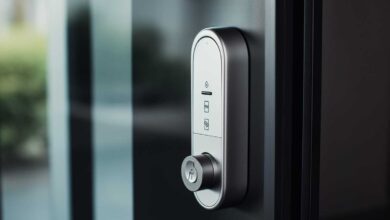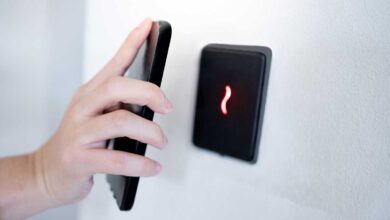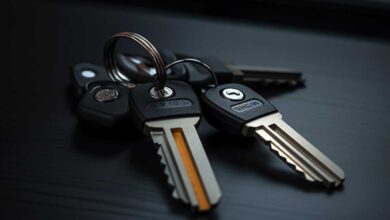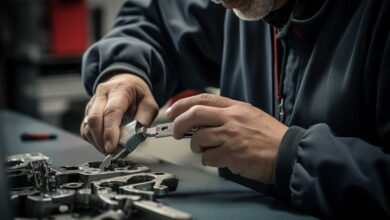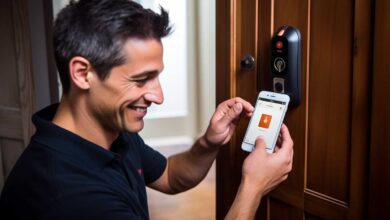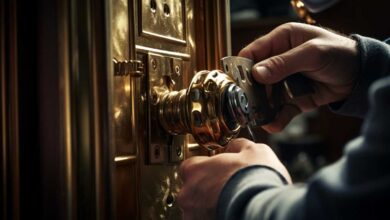Common Materials Used In Home Key Duplication
KEY TAKEAWAYS
Key duplication is an essential service for homeowners, renters, and anyone who uses keys regularly. Whether you’ve lost your only key or just need a spare, knowing the materials and methods used in key duplication can be beneficial. Key duplication involves precision and specialized machinery and equipment. Understanding the process and the common materials used in home key duplication can provide insights into the time and cost involved and help you make informed decisions when you need this service.
In this article, we’ll delve into the common materials and techniques used in home key duplication.
Materials Used In Home Key Duplication
-
Brass or Nickel-Brass Mixture: Most standard house keys are made from brass or a nickel-brass mixture. This material is durable and resistant to wear, which makes it ideal for keys that are used daily.
-
Zinc, Copper, Aluminum, Or Steel: For those looking to cast a key at home, these metals are the best materials for casting. They provide a sturdy and reliable duplicate, although they might not be as durable as professionally cut keys.
-
Other Materials: In emergency situations or for temporary use, materials like soda cans, old credit cards, hotel keys, and even metal objects like butter knives can be used to create a makeshift key. However, these are not long-term solutions and are more fragile than traditional keys.
Key Duplication Methods
-
Key Copy Kiosks: Automated self-service kiosks like Minute Key and KeyMe are popular options for quick and easy key duplication. These machines laser-scan the original key and cut a perfect duplicate within minutes.
-
Retail Stores: Many retail stores offer in-house key duplication services. Stores like Walmart, Home Depot, Lowes, and AutoZone have key copying services that provide a wider selection of keys, including key fobs, transponder keys, and RFID chips.
-
Locksmiths: For a more personalized service, locksmiths are the go-to professionals. They can duplicate almost any key and can even decode a lock to create a new key if the original is lost.
-
DIY Methods:
-
Filing: This method involves using a file to shape a key blank to match the original key. It requires a vise, a file, and a suitable key blank.
-
Outline And Copy: This method involves tracing the original key onto another material and cutting it out. Common materials include soda cans, old credit cards, and hotel keys.
-
Casting With Clay: A more labor-intensive method, this involves creating a mold of the original key using clay or other mold materials and then casting a duplicate using metals like zinc, copper, aluminum, or steel.
If you’ve lost your original key, options include calling a locksmith, bypassing the lock yourself, replacing the locks, or rekeying the locks.
Is It Illegal to Copy a Key?
Regular keys, such as house keys or car keys, are legal to copy. However, “Do Not Duplicate” keys are not protected by law, while “Restricted” keys are protected by U.S. patent laws, making unauthorized duplication illegal.
Types Of Keys
The right type of lock and key is critical to providing security, granting access to spaces and possessions while keeping unwanted individuals out. Over the years, various types of keys have been developed to cater to different security needs. In this section, we’ll delve into some of the most common types of keys used in homes and their unique features.
House Keys
House keys are perhaps the most commonly used keys. They come in various shapes and designs, each tailored to a specific type of lock. Here are some of the most common types of house keys:
-
Mechanical Cut Key: These are typically seen on older car models and doors on homes and commercial spaces. They are cut on one end, with a design of ridges that matches the corresponding lock. Their simple design makes them easy to duplicate, which can be a security concern.
-
Double Or Four Sided Key: This is the most common type used on homes. They have two or four sets of teeth on different sides of the key blade, making them more challenging to duplicate and pick.
-
Dimple Key: These keys feature a number of dimples in various sizes along the blade. The dimples must align properly with the pins inside the lock for it to open.
-
Abloy Key: These keys are designed to unlock disc tumbler locks. They are popular in some parts of the world, like Finland, due to their high security.
-
Primary Key: This key can open every door in a building, making it essential in office buildings and apartment complexes.
-
Skeleton Key: Often used with warded locks, these keys have a serrated component near the tip of the blade. They are less common now due to the decline in warded locks.
-
Magnetic Key: These keys contain magnets that cause the tumblers in a lock to align correctly and release the lock. They are considered highly secure due to their unique mechanism.
High-Security Locks
High-security locks are designed to offer enhanced protection against picking, drilling, and other forms of unauthorized access. They often come with keys that are difficult to duplicate without specific equipment or authorization. Some high-security locks use a combination of pin tumblers and sidebars, requiring the key to do two jobs at once. Others might employ disc-detainer mechanisms, which use rotating discs instead of pins.
Pin Tumbler Lock Keys
Pin tumbler locks are among the most common locks used in residential settings. The key for a pin tumbler lock has a series of cuts that correspond to a set of pins inside the lock. When the key is inserted, the cuts push the pins to the correct height, allowing the lock to turn. The complexity and depth of the cuts determine the security level of the lock. The more varied and intricate the cuts, the harder the lock is to pick.
Types Of Metal Objects Used For Key Duplication
When it comes to key duplication, various metal objects and techniques are employed to ensure precision and functionality. The choice of metal and method often depends on the type of key, the equipment available, and the desired durability of the duplicate key. Let’s delve into some of the common metal objects and methods used in key duplication.
Key Blanks
Key blanks serve as the foundation for creating duplicate keys. They are uncut keys that can be shaped and designed to match an existing key. The pins that comprise a regular key are usually made from either brass or a combination of brass and nickel. These pins can become damaged over time, making the role of key blanks crucial in the duplication process. When a key is duplicated, the key blank is cut using the original key as a template, ensuring a perfect match.
Pieces Of Metal
In some duplication methods, especially DIY techniques, various pieces of metal can be used to create a makeshift key. Here are some of the metals and methods:
-
File Method: This method involves using a triangular file and a vise to work on a blank key to match the original. The two keys are placed side by side in a vise, and the blank key is filed using the original as a guide. This method works primarily with pin tumbler lock keys.
-
Mold Method: A more labor-intensive method, this involves creating a mold of the original key using materials like clay, soap bars, or even bubble gum. The best casts are made from metals like steel, copper, and aluminum. While these casted keys are functional, they are not as durable as those made using professional equipment.
-
Tracing Method: This method involves tracing the original key onto another strong material, such as old credit cards, soda cans, or metal objects like butter knives. The traced outline is then cut out to create a makeshift key.
Automated Self-Service Kiosks
Modern technology has paved the way for automated self-service kiosks that offer key duplication services. In these kiosks, a duplication machine scans the original key to identify its type and the depth of the cut. Within minutes, the machine produces a perfect duplicate key. Depending on the model installed in the kiosk, some machines can copy house padlocks, while others can duplicate car keys or RFID chips/cards. These kiosks provide a quick and convenient solution for those in need of key duplication without the wait or interaction with a locksmith.
Professional Key Duplication Services And Machines
Key duplication is an essential service that ensures individuals have access to their properties, vehicles, and other secured areas. Over the years, the technology and methods used in key duplication have evolved, leading to the development of sophisticated machines and services that offer precision and reliability. Let’s explore professional key duplication services and the machines that make it possible.
Key Duplicator Machines
Key duplicator machines are devices designed to create exact replicas of keys. These machines come in various types, each tailored to address specific types of keys:
-
Manual Key Cutting Machines: Operated manually, these machines require the operator to secure the template key and the key to be duplicated on top of each other. The machine then manually traces the profile on the duplicate key to achieve an identical shape.
-
Automatic Key Cutting Machines: These machines automate the duplication process. The original and blank keys are placed inside the machine, where a stylus traces the shape of the template key while simultaneously cutting the duplicate. Automatic machines are faster and more precise than manual ones.
-
Laser Key Cutting Machines: As the name suggests, these machines use lasers to cut keys. They offer high precision and are often used for high-security key systems.
-
Tubular Key Cutting Machines: Specifically designed for tube-shaped keys, these machines ensure accurate duplication of tubular keys.
-
Cylinder Key Cutting Machines: These machines are designed for cylindrical keys that have a bow and a long blade.
-
Mortice Key Cutting Machines: Used for keys that require a pocket to be cut into, these machines are essential for duplicating mortice keys.
Punch Machine
While not explicitly mentioned in the source, punch machines are another type of key duplicator. They work by punching the key blank to the correct depth corresponding to the original key. This method is often faster and can be more accurate than traditional cutting, especially for certain high-security keys.
Key Cutting Services
Key cutting services are offered by professional locksmiths who possess the expertise and equipment to duplicate keys accurately. These services can range from duplicating standard house keys to more complex security keys. The quality of the finished product is highly dependent on the expertise of the locksmith and the machinery used. It’s always recommended to seek services from certified locksmiths to ensure the integrity of the duplicated key.
Retail Stores
Many retail stores, especially hardware stores, offer key duplication services. These stores often have key duplicator machines on-site and can provide quick and convenient key copying services for customers. While retail stores offer convenience, it’s essential to ensure that the store has the right equipment and trained personnel to handle key duplication accurately.
Choosing The Right Key Material
There are various materials and methods available for key duplication, each with its advantages and limitations. Whether you choose a professional service or a DIY method, it’s essential to ensure the duplicate key is reliable and functional. From the simple mechanical cut keys to the high-security abloy keys, each type serves a unique purpose and offers a different level of security. Whether you’re looking to upgrade your home’s security or simply curious about the types of keys out there, understanding their differences can help you make informed decisions.
Learn more about ways to secure your home by checking out our detailed guide on cost factors in high-security key duplication. Visit Security Forward and browse through the available resources to learn more.
